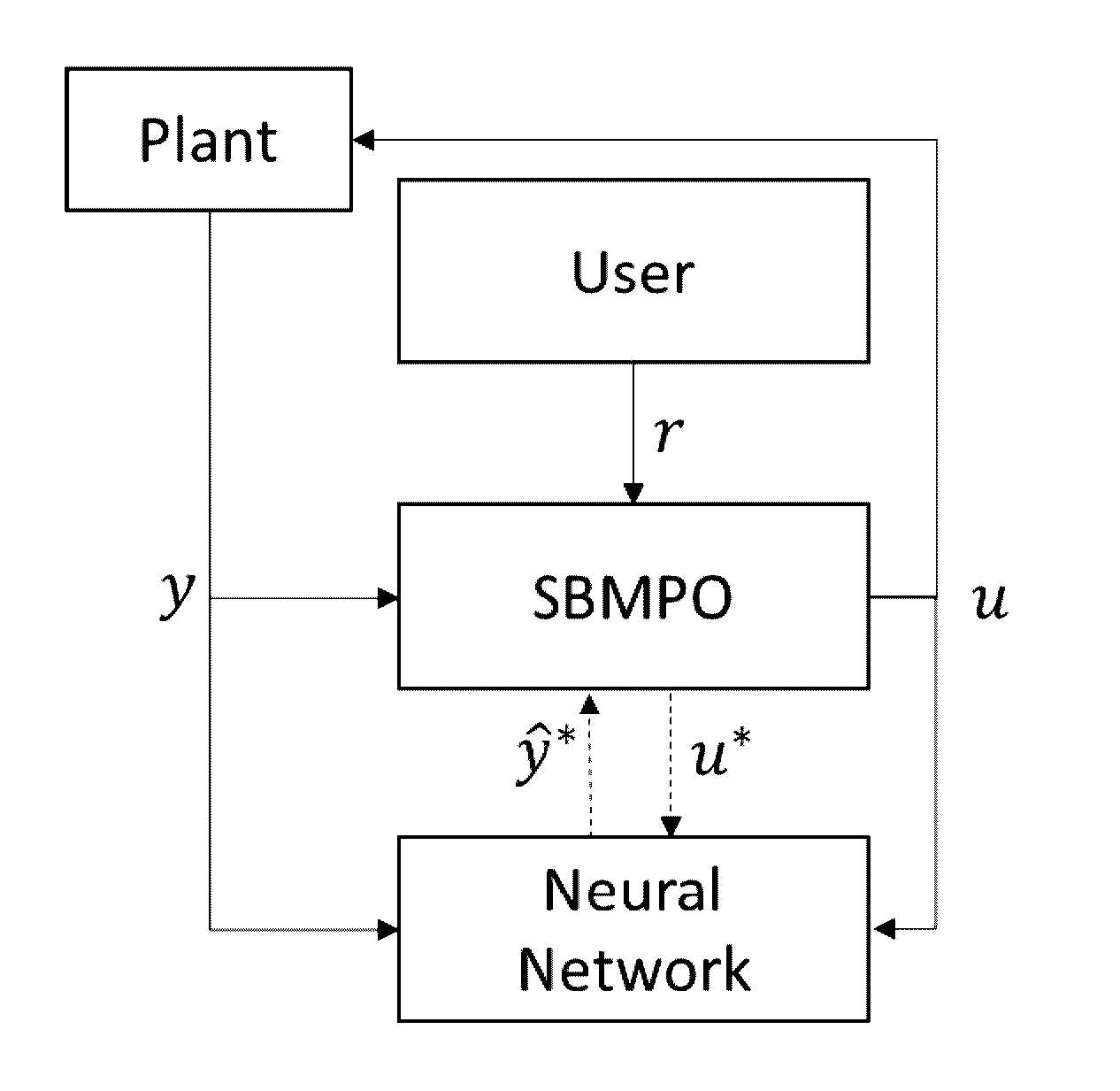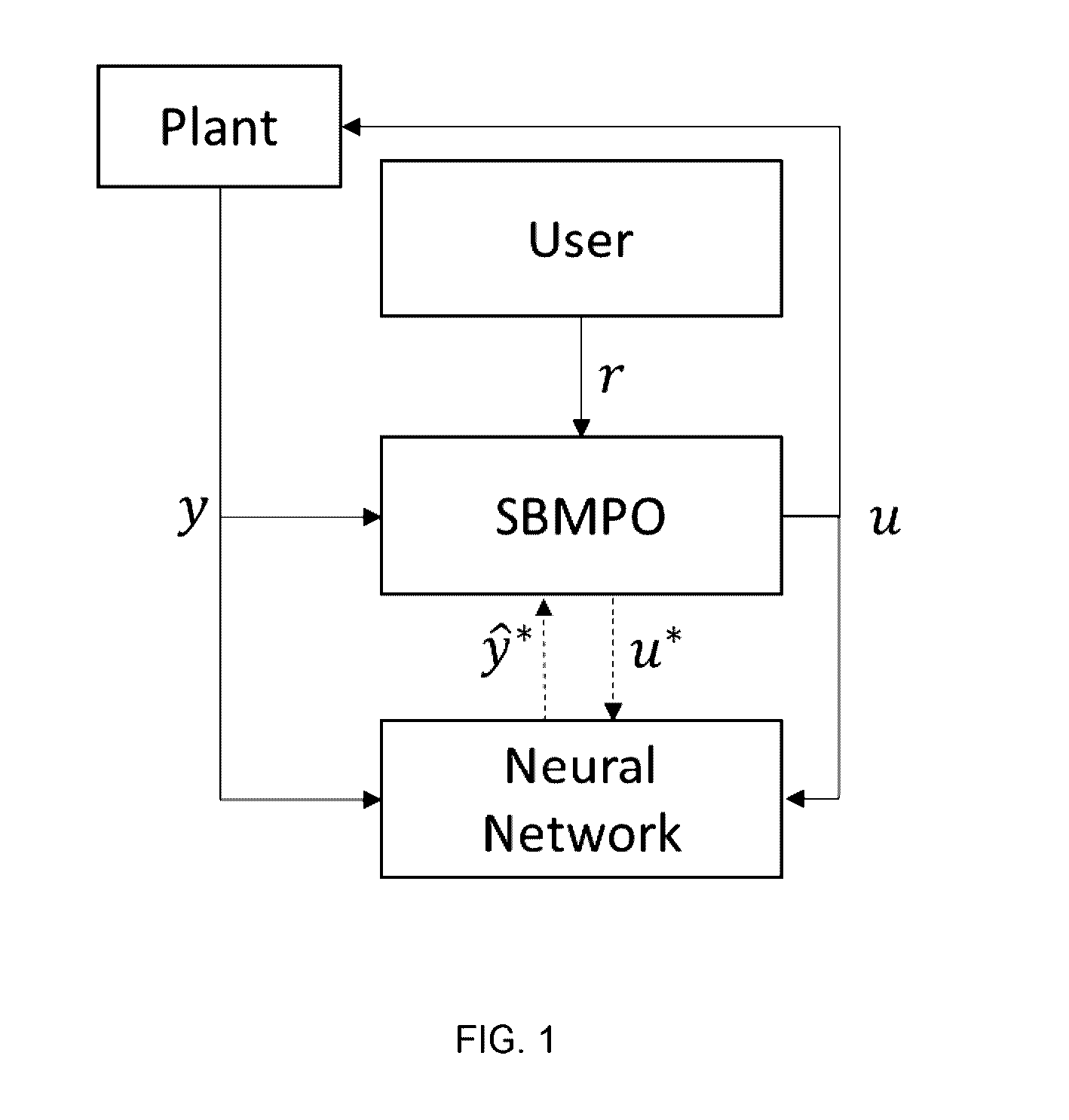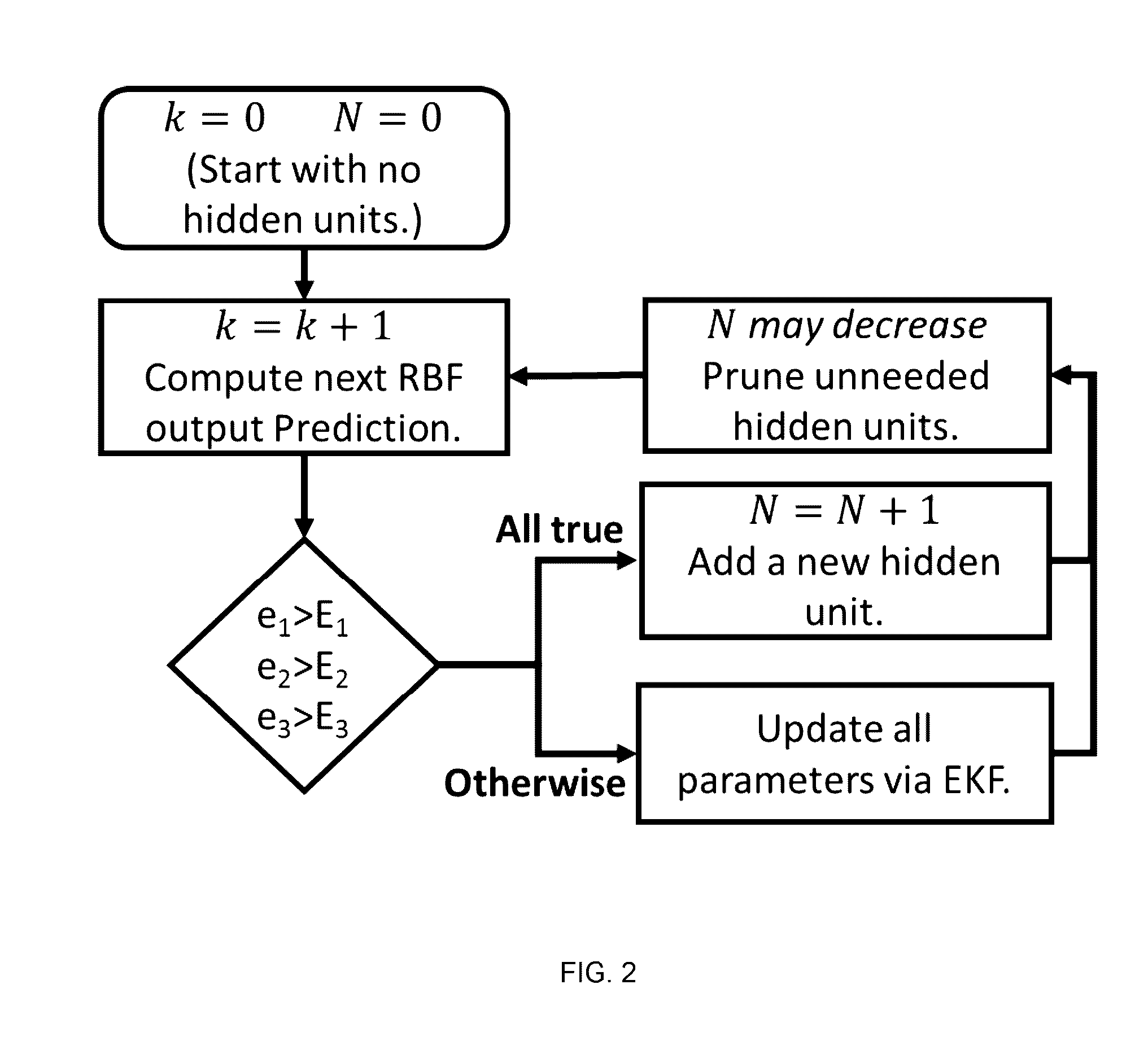Adaptive nonlinear model predictive control using a neural network and input sampling
a nonlinear model and neural network technology, applied in adaptive control, program control, instruments, etc., can solve the problems of increasing the duty cycle of traditional power plants, unable to guarantee the satisfaction of hard input and output constraints, and the description of methods based on nonlinear fuzzy models as computationally expensive, etc., to achieve low tracking error and ensure the satisfaction of output constraints.
- Summary
- Abstract
- Description
- Claims
- Application Information
AI Technical Summary
Benefits of technology
Problems solved by technology
Method used
Image
Examples
case 1
[0068] Time-Invariant SISO Problem
[0069]The first simulated case was the in which only the mechanical efficiency of the burner was considered for optimization. In this case, Φf was specified externally, and only a single control input φ was used. The control task was to seek the concentration of oxygen xO2 in the flue gas that was optimal for burning efficiency xO2,opt, a value that was prescribed as a function of Φf. The cost function being optimized is presented in Equation 13,
a. C=Σi=0N-1Cmec(i) (13)
b. has a single quadratic cost term given by Equation 14,
c. Cmec(i)=(xO2(k+i)−xO2,opt(k+i))2 (14)
d. and control signals were determined by sampling inputs in bounded increments such that Equation 15 is true,
e. −0.5°≦Δφ≦0.5° (15)
f. in any two consecutive time steps.
[0070]After the 60-second learning phase for Case 1, the number of RBF hidden units had converged to 19. The number of hidden units remained constant throughout the control phase of the simulation. SBMPC and GPC both succ...
case 2
[0071] Introducing a Carbon Penalty Cost
[0072]Case 2, and extension to three outputs, considers greenhouse gases CO and CO2 in order to control environmental impact of the power plant. The updated cost function is given by Equation 16,
a. C=Σi=0N-1Cenv(i)+Cmec(i) (16)
where
b. Cenv=CCO+CCO2 (17)
and
c.CCO={0,xCOLCO(xCO-LCO)PCO,xCOLCO(18)d.CCO2={0,xCO2LCO2(xCO2-LCO2)PCO2,xCO2LCO2(19)
[0073]The cost function introduces terms that linearly penalize pollutant levels above the respective thresholds LCO2 and LCO with penalty slopes PCO and PCO2. The limitations on CO and CO2 are implemented as soft constraints via these linear penalties rather than hard constraints. This is done because initial conditions and time variation of the plant yield states in violation of the desired range of outputs. Starting from this initial condition, the use of hard constraints would allow no feasible solutions. Instead, a large penalty was placed on outputs above desired levels to so that optimal control strat...
case 3
[0078] Control System Adaptation Under Changing Dynamics
[0079]The third simulation case demonstrates the versatility of the adaptive algorithms as changes in plant dynamics are introduced that require active model updates. The online identification algorithms are able to quickly adjust to changing plant behavior, either by back-propagation (BPN) or the EKF optimization of MRAN (RBF).
[0080]In the simulation, plant dynamics were applied as step parameter changes at the beginning of each 500 second interval of simulation time. The nature of the changing boiler dynamics is presented in Table 7. Each change is from the normal dynamic behavior, such that the changes mentioned are in effect during the interval but revert back to the normal values.
TABLE 7TIME VARIATION OF SIMULATION PLANT DYNAMICSTime (s)DescriptionQuantitative Changes 0 to 500Normal Boiler OperationNone 500 to 1000Constricted Air FlowΦmax is 36% smaller1000 to 1500Damp FuelH2O added to comprise 5% offuel mass1500 to 2000Sm...
PUM
 Login to View More
Login to View More Abstract
Description
Claims
Application Information
 Login to View More
Login to View More - R&D
- Intellectual Property
- Life Sciences
- Materials
- Tech Scout
- Unparalleled Data Quality
- Higher Quality Content
- 60% Fewer Hallucinations
Browse by: Latest US Patents, China's latest patents, Technical Efficacy Thesaurus, Application Domain, Technology Topic, Popular Technical Reports.
© 2025 PatSnap. All rights reserved.Legal|Privacy policy|Modern Slavery Act Transparency Statement|Sitemap|About US| Contact US: help@patsnap.com



